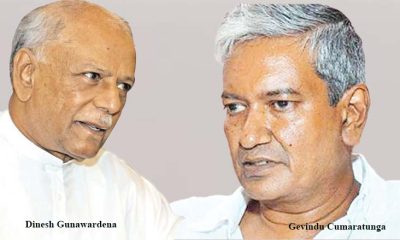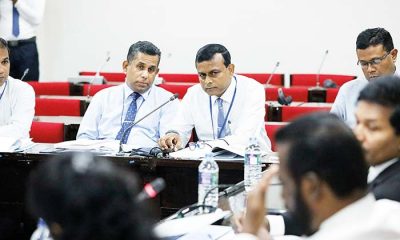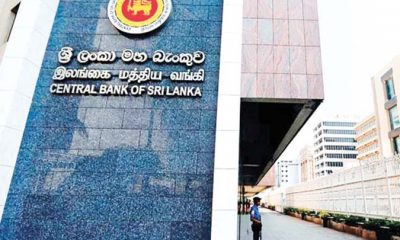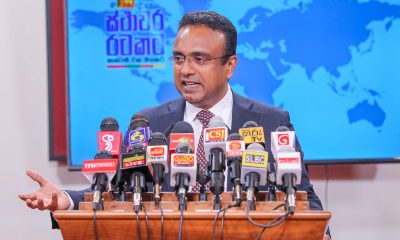Business
Charting Sri Lanka’s economic future: Current challenges and strategies for resilient growth
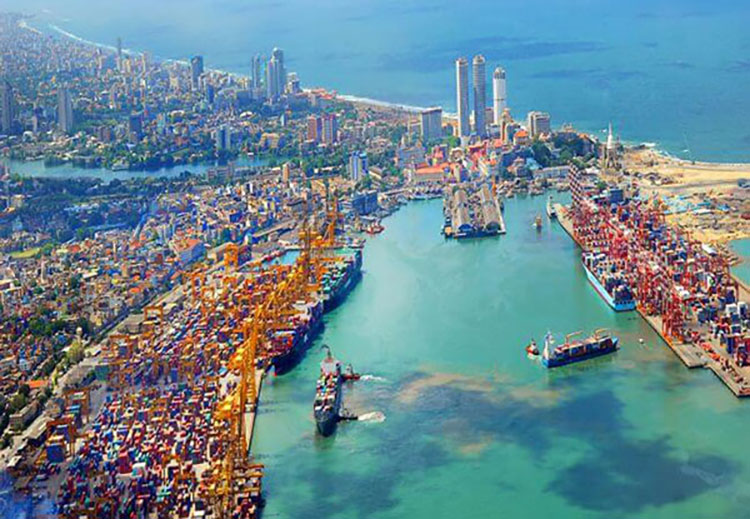
By Rasith Wickremasinghe COYLE Chairman
The Sri Lankan economy currently grapples with the significant challenges presented by a complex financial situation unfolding in unprecedented ways. As the country tackles the intricacies of this economic turmoil to overcome fiscal obstacles, there is a prevailing sense of concern among the populace. Against this backdrop, the nation contends with politically motivated decision-making that bears the marks of a presidential election at the end of 2024.
Despite these existing realities, we remain optimistic about the rising potential through collective efforts and shared objectives driven by the nation’s private sector, aiming to revitalize the economy. In the present circumstances, positive indicators emerge as macroeconomic policy reforms start showing concrete outcomes, signalling a promising phase of stabilization in Sri Lanka’s economic landscape. Nonetheless, the path to recovery and inclusive growth relies on maintaining the ongoing momentum of these reforms.
Looking at the recent upgrade of Sri Lanka’s local currency rating from selective default (SD) to CCC+/C by S&P Global Ratings, there is a reflection of a more optimistic view of the country’s solvency. This upgrade follows the finalization of a domestic debt restructure, including collaboration with superannuation funds (EPF/ETF) and the Central Bank. https://www.fitchratings.com/research/sovereigns/fitch-upgrades-sri-lanka-long-term-local-currency-idr-to-ccc-28-09-2023
The completion of the first IMF review under the 48-month Extended Fund Facility marks a significant milestone, unlocking access to SDR 254 million (about US$337 million) to support the country’s economic policies and reforms. Notably, Sri Lanka’s performance under the program has been deemed satisfactory, with the majority of performance criteria and indicative targets met by the end of June.
The publication of the Governance Diagnostic Report showcases a pioneering step, positioning Sri Lanka as the first country in Asia to undergo this IMF exercise. The commendable progress made by the authorities in restoring debt sustainability, raising revenue, and ensuring financial stability reflects a positive trajectory. Moving forward, a strong commitment to improving governance and protecting the welfare of the vulnerable will be crucial, laying the foundation for a resilient and prosperous economic future.
Examining Sri Lanka’s net general government debt, which currently exceeds 100% of GDP and is projected to persist until at least 2028, there are challenges ahead. Addressing concerns about long-term sustainability, potential positive shifts can be driven by factors such as nominal GDP growth, successful fiscal consolidation, increased revenue generation, current interest rates, and the positive impacts of future restructuring efforts. By navigating these aspects effectively, Sri Lanka has the potential to enhance its fiscal outlook and achieve more favourable outcomes in the coming years. https://www.fitchratings.com/research/sovereigns/fitch-upgrades-sri-lanka-long-term-local-currency-idr-to-ccc-28-09-2023
It’s noteworthy that Sri Lanka’s Budget for 2024 presents ambitious targets, though they pose challenges, particularly with the projected wider fiscal deficit of 9.1% of GDP. The government’s focus on achieving a primary surplus, excluding bank recapitalization, aligns with the IMF’s projections. However, the expenditure target of 22.2% of GDP exceeds the IMF’s envisioned 19.7%. While this discrepancy may raise questions, it also reflects a commitment to ambitious goals, and successful implementation could enhance the budget’s long-term viability and effectiveness. https://island.lk/sri-lankas-ambitious-budget-agenda-faces-high-implementation-risks-fitch-ratings/
Fitch Ratings has already expressed concerns about the government’s plan to reach its revenue target by 2024. Sri Lanka has a history of not meeting fiscal goals, with revenue collection falling short by 29% in the first nine months of 2023. Recently, the government has planned a revenue increase of nearly 45% in 2024, with a confirmed 3-percentage-point rise in the value-added tax to 18%.
We believe as far as tax revenue is concerned, widening the tax net or the number of taxpayers in the country is more critical than raising the percentage values. Only as little as 2.6% of Sri Lanka’s total workforce of 4.64 million is subjected to the PAYE income tax. Nearly half of the labour force receives less than Rs.30,000 monthly salary, while 3.91 million families, out of 5.8 million families, are seeking state assistance to continue their livelihoods. In 2021, there were about 105,000 registered companies, and 60,721 had income tax files, from which 82 per cent of the corporate income taxes were paid by 342 companies. https://economynext.com/sri-lanka-only-has-137-persons-who-paid-income-taxes-of-rs5mn-or-more-legislator-100108/#:~:text=Sri%20Lanka%20in%202021%20had,were%20paid%20by%20342%20companies
What baffles us mostly is the number of tax files reported by the inland revenue which is recorded to be only 500,000 as per the Commissioner Association Inland Revenue department. https://www.newsfirst.lk/2023/07/27/tott-only-500-000-tax-files-in-sri-lanka-president-commissioner-association-27-07-2023/ . If the recorded number of tax files is only 500,000 out of the 5.8 Million families in Sri Lanka, we must ask the question of what has happened to the rest of the taxpayers.
Several businesses in Sri Lanka, whether small, medium, or large, conduct their transactions mainly through cash. Despite how much they earn, there can be several loopholes they can harness for tax evasion. Even though it is apparent in many ways, there is little to no step taken forward to curb the issue owing to political gains or the mass displeasures that could arise curbing the future of many political affiliates in the decision-making process.
Concurrently, the growing wealth gap between the affluent and less privileged segments of the population is reaching alarming levels, compelling numerous skilled professionals to seek better opportunities abroad.
It’s not just the taxation system; the government’s inability to overhaul unprofitable state-owned enterprises (SOEs) adds to the discontent. The weight of these financially struggling entities falls disproportionately on a limited number of taxpayers, causing widespread chaos that ripples through the entire system. This, in turn, has a cascading impact on the economy and Sri Lankan society. An aspect often overlooked by many governing parties owing to their political future. Given that a significant portion of those affected by these restructuring efforts comprises a substantial voter base and influential circles in the country, there appears to be a reluctance among decision-makers to take the necessary corrective actions.
One of the contributing factors for the IMF to provide the second tranche was the promise to reduce the commercial bank interest rates to single digits, which is yet to be done. Even though the president and the CBSL have requested the above, several parties have been insensitive about the situation and requests. As COYLE, we emphasize the importance of expanding the tax potential net and then further tracking the registered yet inactive member mass. However, we can observe, that the government is now distracted to a path more concerned with securing votes for the upcoming elections as opposed to the earlier economic revival path, which has diminished its momentum from the critical pace of decision-making on SOE restructuring.
This will bring us to COYLE’s point of view on how we can set further to solve the foreign currency deficit by adopting different and dynamic strategies. At COYLE, we believe Sri Lanka must look at foreign direct investments with changing state policy decisions to have a more attractive and investor-friendly outlook to attract numerous investors from booming industries. We urge the Parliamentary Select Committee on Ease of Doing Business to reactivate and pursue proactive steps towards ensuring FDIs are secure in the country without further delay.
Business
Trump heads to Saudi Arabia eyeing more investment in US

With US President Donald Trump due to visit Gulf states this week, a key focus will be securing significant new investment for the US economy.
“President Trump wants the announcement [of more Gulf money for the US],” says economist Karen Young, a senior fellow at the Middle East Institute think tank.
“He wants to have a big poster in a meeting that describes where these investments might go. And some estimation of what they will do to the American economy in terms of job creation or his big push, of course, on domestic manufacturing.”
Trump is due to arrive in the Saudi capital, Riyadh, on Tuesday 13 May, to meet the country’s de facto leader Crown Prince Mohammed bin Salman.
Trump is then expected to attend a summit of Gulf leaders in the city on 14 May, before travelling to Qatar that same day, and then ending his three-day trip in the United Arab Emirates (UAE) on 15 May.
The economic importance of the region to Trump is highlighted by the fact that the visit to Saudi Arabia was due to be the first overseas trip of his second term in the White House. That was before the death of Pope Francis necessitated Trump attending his funeral in Rome towards the end of April.
Saudi Arabia was also the first country that Trump visited during his first term of office, going against the modern practise of US presidents to start with the UK, Canada or Mexico.

Securing new investments in the US from Gulf states, and particularly from their state-backed sovereign wealth funds, will help Trump to signal back home that his “America First” agenda is delivering results.
The presidential visit is drawing top Wall Street and Silicon Valley leaders to Saudi Arabia. A Saudi-US investment forum on 13 May in Riyadh will feature CEOs from BlackRock, Palantir, Citigroup, IBM, Qualcomm, Alphabet, and Franklin Templeton.
The push comes amid economic headwinds, as President Trump’s new import tariffs have significantly disrupted global trade, confidence, and the US economy itself. US economic output fell in the first three months of this year, its first fall in three years.
Back in January, Prince Mohammed said that Saudi Arabia would invest $600bn (£450bn) in the US over the next years. However, Trump has already said that he’d like that to rise to $ 1tn, including purchases of more US military equipment.
According to Ali Shihabi – a Saudi commentator and author, with close ties to the Saudi government – a number of economic agreements will be signed during the trip.
“These deals will further integrate the Saudi and US economies together, joint ventures in the kingdom, in the United States, procurements of American weapons and goods,” says Mr Shihabi.
Saudi Arabia’s sovereign wealth fund, the Public Investment fund (PIF), which controls assets worth $925bn, already has numerous investments in the US. These include Uber, gaming firm Electronic Arts, and electric car firm Lucid.
Meanwhile, the UAE has already committed to investing $1.4tn in the US over the next 10 years, in sectors such as AI, semiconductors, energy and manufacturing. This was announced by the White House in March after the UAE’s national security advisor, Sheikh Tahnoon bin Zayed Al Nahyan, met President Trump in Washington.
Yet Ms Young from the Middle East Institute says that the scale of these investments is not realistic in the short term. She instead says that they are long-term strategic moves, and that the figures should be taken “with a little bit of a grain of salt”.
Regarding specific deals that could be announced during Trump’s visit, it is widely reported that Saudi Arabia will agree to buy more than $100bn of US arms and other military items.
These are said to include missiles, radar systems and transport aircraft.
The US has been a longstanding arms supplier to Saudi Arabia, but in 2021 the then Biden administration stopped selling Riyadh offensive weapons, citing concerns about the country’s role in the war in neighbouring Yemen.
The 2018 killing of Saudi journalist Jamal Khashoggi was also widely reported to be a factor. A US report said that Prince Mohammed had approved the murder.
The Biden White House resumed the sale of these weapons last year. While it cited that the Saudis had stopped bombing Yemen, some commentators said that the US was seeking Saudi assistance to help end the conflict in Gaza and aid its future reconstruction.

Mr Shihabi says Saudi Arabia will be seeking assurances from the White House that the US will implement a “more efficient procurement system”, enabling the Gulf state to access ammunition and military equipment far more quickly and easily.
“The Trump administration is initiating procedures to facilitate those deals. So, it’s expected that this process will improve immediately,” he adds.
Artificial intelligence is the other topic that will dominate the agenda during Mr Trump’s visit. Talks are expected to centre on attracting greater Gulf investment into US tech firms, and boosting the region’s access to cutting-edge American semiconductors.
The UAE and Saudi Arabia have been investing billions of dollars into tech and AI sectors as try to diversify their economies away from oil.
The Emiratis, in particular, are keen to establish themselves as a global AI hub.
Last week, the Trump administration scrapped the Biden-era chip regulations that placed restrictions on exports of advanced US chips to more than 120 countries including the Gulf states.
The White House is expected to draft new rules that would potentially involve direct negotiations with countries like the UAE.
“For the UAE, this is absolutely essential,” says Ms Young. “They are aggressively building out their AI capacity. So, for them getting access to US technology is imperative to be the best.”
While much attention will be on Trump courting Gulf capital for the US, Saudi Arabia is equally focused on drawing American investment into its ambitious Vision 2030 program.
Led by giant construction projects, such as the building of a linear city called The Line, Vision 2030 is central to the Saudi government’s continuing efforts to diversify the country’s economy away from oil.
It also involves pouring resources into entertainment, tourism, mining and sports.
However, foreign direct investment into Saudi Arabia declined for a third straight year in 2024, reflecting persistent challenges in attracting overseas capital.
The fall in global oil prices since the start of the year has further strained Riyadh’s finances, increasing pressure to either raise debt or cut spending to sustain its development goals.
Oil prices tumbled to a four-year low amid growing concerns that a trade war could dampen global economic growth.
The decline was further fuelled by the group of oil producing nations, Opec+, announcing plans to increase output.
Saudi Arabia is part of that group, and some commentators said that the rise was in part a desire to please Trump who has called for lower oil prices.
Other analysts said the reason was more that Opec+ remains confident that the global economy is growing.
The US-Saudi Business Council, is an organisation that aims to boost trade ties between the two countries.
It is hoping that Trump’s visit will push American businesses to explore more opportunities in Saudi Arabia, especially in sectors like AI, healthcare and education.
“The Saudi government is looking heavily to invest in these sectors. There is a very big appetite for Saudi companies to collaborate with American companies,” Hutham Al Jalal, who heads the Riyadh office for the organisation, tells the BBC.
Saudi officials are said to be confident that some deals in these sectors will be secured during Trump’s visit.
For Saudi Arabia, Trump’s visit is about strengthening ties with their longest-standing Western ally – a relationship that grew strained during the Biden years. For President Trump, it is about landing investment deals that can be framed as a win for his economic agenda.
“President Trump is looking for a headline of big investments in America, and he will get that from this trip,” adds Mr Shihabi.
[BBC]
Business
DMASL Digital Summit 2025 set for July 24-25 in Colombo

The Digital Marketing Association of Sri Lanka (DMASL) has announced the DMASL Digital Summit 2025, South Asia’s ‘most anticipated’ digital innovation forum, scheduled for July 24–25 in Colombo. Marking its third edition, the summit is poised to be the largest and most transformative yet, uniting many industry leaders, creators, and visionaries to shape the region’s digital future.
Under the theme “Where Asia’s Digital Minds Converge,” the 2025 summit amplifies its role as a catalyst for cross-border collaboration and cutting-edge strategies. This year’s agenda spotlights Asia’s rapid digital evolution, offering a dynamic platform for professionals driving transformation in marketing, technology, and commerce.
The event will feature the following.
Visionary keynotes from global pioneers in AI, data analytics, and digital commerce. Masterclass workshops on AI-driven marketing, omnichannel strategies, and ROI optimization. Interactive innovation zones featuring live tech demos, VR/AR experiences, and startup pitch sessions. Regional success stories through case studies from top brands and emerging disruptors and Hyper-targeted networking with C-suite executives, policymakers, and content creators.
Business
LIC Lanka secures Rs. 2 billion capital infusion from its Indian parent company

Timing aligns with Sri Lanka’s hunger for FDI and LICL’s ambition to shed its low-profile past
In a bold move signaling renewed confidence in Sri Lanka’s economic recovery, Life Insurance Corporation Lanka Ltd (LICL) has secured a Rs. 2 billion capital infusion from its Indian parent company (LIC of India), marking one of the largest foreign direct investments (FDI) in the island’s insurance sector this year.
The injection arrives as Sri Lanka has intensified its efforts to attract global capital while LICL is also positioning itself to reshape the underpenetrated life insurance market through aggressive expansion, tech upgrades, and innovative retirement plans targeting underserved workers in the private sector and in the informal economy.
LICL, a 23-year-old joint venture between LIC India (97% stakeholder) and Bartleet Transcapital (3%), plans to leverage the fresh funds to overhaul its IT infrastructure, streamline its 24-branch network, and launch private-sector retirement schemes – among other products including investment plans – tailored for informal and private-sector employees lacking retirement coverage.
LIC Lanka’s new MD/CEO Prameela Chittazhi Ramanadhan, a 27-year LIC India veteran, told The Island that the timing aligns with ‘Sri Lanka’s hunger for FDI’ and LICL’s ambition to shed its ‘low-profile’ past.
“This investment isn’t just capital. it’s a vote of confidence from our parent company in Sri Lanka’s potential,” Prameela asserted. “We’re addressing critical gaps: only 0.5% of GDP comes from life insurance, and millions lack pension safety nets. Our new products will redefine accessibility to this segment,” Prameela CR said.
A portion of the funds will modernise LICL’s digital infrastructure to fast track claims processing and customer service, a critical step as the insurer seeks to rebuild trust in a sector still scarred by the 1960s nationalisation of foreign firms.
“Trust is earned through consistency. In 23 years, not a single customer has accused us of unmet promises,” Prameela noted, hinting at upcoming campaigns showcasing client success stories.
LICL’s push comes amid lingering skepticism toward life insurance, partly rooted in societal beliefs. The 1961 nationalisation of insurers, which forced foreign players to exit, left a legacy of public wariness. Prameela CR acknowledged the challenge but expressed optimism: “We’ve operated here for decades without controversy. Now, we’ll be louder about our track record,” she said.
Prameela CR , a law graduate who rose through LIC India’s ranks since 1997, brings cross-functional experience to her role. Her strategy hinges on ‘localised innovation,’ blending LIC India’s global scale with targeted products for Sri Lanka’s ground realities.
Post-capital infusion, LIC Lanka is poised to be no longer the quiet player.
With insurance penetration languishing at 0.5% of GDP, far below regional peers like India (3.2%) – LICL’s gamble hinges on convincing Sri Lankans that life insurance isn’t a luxury but a necessity.
“The pension push could tap into growing anxiety over retirement security as the population ages,” LIC Lanka said.
As FDI-starved Sri Lanka watches, LICL’s Rs. 2 billion bet may prove a litmus test for foreign insurers eyeing the island’s untapped potential.
Industry analysts say LICL’s Indian pedigree could bolster its credibility. LIC India, the world’s third-strongest insurance brand, manages over $500 billion in assets, offering LICL technical expertise and actuarial firepower.
By Sanath Nanayakkare
-

 Business7 days ago
Business7 days agoAitken Spence Travels continues its leadership as the only Travelife-Certified DMC in Sri Lanka
-

 Latest News5 days ago
Latest News5 days agoNPP win Maharagama Urban Council
-

 Business7 days ago
Business7 days agoLinearSix and InsureMO® expand partnership
-

 Features2 days ago
Features2 days agoSAITM Graduates Overcome Adversity, Excel Despite Challenges
-

 Business5 days ago
Business5 days agoJohn Keells Properties and MullenLowe unveil “Minutes Away”
-

 Sports2 days ago
Sports2 days agoASBC Asian U22 and Youth Boxing Championships from Monday
-

 News2 days ago
News2 days agoDestined to be pope:Brother says Leo XIV always wanted to be a priest
-

 Foreign News3 days ago
Foreign News3 days agoMexico sues Google over ‘Gulf of America’ name change



